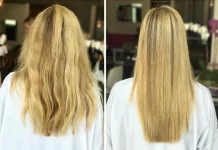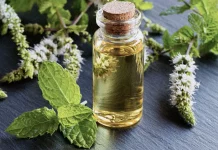Head lice is a prevalent condition that mostly affects youngsters at school and their families. They may attach themselves to anyone’s hair. It makes no difference whether the hair is clean or unclean. Head lice may be found in a variety of settings, including homes, schools, and even the countryside or city. And it makes no difference whether the location or individual is clean, unclean, wealthy, or impoverished. Head lice are a nuisance, but they do not cause significant sickness or transmit infections. Head lice may be treated at home, but you should see a doctor first. Also , read our latest blog on Post-menstrual bleeding here.
What are head lice?
Head lice are microscopic insects around the size of a sesame seed that infest the scalp. Their bodies are generally light and grey in colour, although they may be any colour. A louse is one of these microscopic insects.They feed on blood from the scalp in minute amounts. They can normally go for one to two days without eating blood. Lice deposit their eggs in close proximity to the scalp and attach them to hair. Nits are the eggs and their shell casings. They’re oval, approximately the size of a thread knot, and yellow to white in colour. They’re frequently misidentified as dandruff or hair spray droplets. Nits adhere to your hair with a sticky substance that keeps them there. The empty nits appear when the eggs hatch.
What is the life cycle of head lice?
It takes 28 days for head lice to die. Egg (also known as a nit), nymph, and adult louse are the three stages of development. Whether it’s an egg or a nit, the decision is yours In 6–9 days, the eggs or nits hatch. Eggs can only survive if they are within 4 to 6 mm of the scalp. Nymph. Although the nymph has the appearance of an adult head louse, it is considerably smaller (about the size of a pinhead [1.5 mm]). About 7 days after hatching, nymphs become adults. Louse that has reached adulthood. An adult louse may lay up to ten eggs every day and reproduce quickly. Newly hatched eggs reach maturity in around 12 to 14 days. If you have head lice, this cycle might happen every three weeks.
Head lice are most common in preschool- and elementary school–aged children.
In the United States, millions of school-aged children are infected with head lice each year. Head lice, on the other hand, can affect anyone. Head lice may be found all throughout the world. Crawling insects, head lice are. They are not able to leap, hop, or fly. Close, sustained direct contact is the most common route for head lice to spread. Sharing products like combs, brushes, and caps has a very minimal probability of spreading this. The most typical symptom is itching in the places where they are present. However, it might take up to 6 weeks after lice have infested the scalp for the scalp to become sensitive to the lice saliva and itchy. The majority of itching occurs behind the ears or around the nape of the neck.
What Are the Symptoms of Head Lice?
The most frequent symptom is itching on the scalp, neck, and ears, which is caused by an allergic reaction to louse saliva. Although lice are visible, they are tiny, move swiftly, and shun light, making them difficult to detect. Head lice are around 3 mm long and lay their eggs near the base of the hair shaft, which are called nits. The nits attach to the hair shafts and are small and disguised to blend in with the hair colour, making them difficult to spot; nonetheless, they are most visible around the ears and neck hairline. Because they are lighter in colour and have risen up further from the scalp, empty nits are easier to identify.
How Are Head Lice Diagnosed?
Identification of a live nymph or adult louse is the gold standard for identifying an active head lice infection. This is done by inspecting wet hair that has been lubricated with conditioner. A fine-toothed nit comb may be combed through the hair from the scalp to the ends, and nits will accumulate in the comb, indicating an infestation. Furthermore, your child’s health care practitioner can check for nits in his or her hair and may use a specialised light to make nits appear bluish.
How Are Head Lice Treated?
It is suggested that you or your kid see your health care practitioner before seeking treatment. Children have been treated for head lice with over-the-counter medicine when they do not have an active infestation, according to studies. Dead or empty nits from a previous head lice infestation, dandruff, hair product residue, bead of dead hair tissue on hair shaft, scab tissue, dirt or other debris, or even tiny insects in the hair can all be mistaken for an active infestation. Your doctor would most likely prescribe an over-the-counter drug to kill lice and some eggs; however, these medications may not destroy newly deposited eggs.
As a result, 9 days following the initial treatment, a second treatment is typically required to eliminate nymphs after they hatch and before they become adult lice. To preparation for therapy, wash your child’s hair with shampoo but no conditioner. Before washing, a white vinegar rinse can help dissolve the adhesive that adheres the nits to the hair shafts. Follow the directions on the packaging to learn how to use the medicine and how long to leave it in your hair. Permethrin (Nix) and pyrethrin with additions are two OTC drugs (Rid, A-200 Lice Killing). If your kid is sensitive to chrysanthemum or ragweed, avoid using these items.
Are There Any Non Medication Treatments?
There are several alternative home remedies to consider if you don’t want to utilise a medicine to treat a head lice infestation. Keep in mind that some therapies have little to no scientific proof of effectiveness:
- Using a fine-toothed nit comb on damp hair can help eliminate lice and nits. For many weeks, continue this process every 3 to 4 days.
- Several natural plant oils may have a harmful impact on lice and eggs, according to some modest clinical investigations. Tea tree oil and anise oil are two examples.
- To suffocate the lice and nits, use household goods like mayonnaise, olive oil, butter, and petroleum jelly. Apply the product to the hair, cover it with a shower cap, and let it sit for a few minutes.
- There are some shampoos available in the market which kills the lices as well. These are available at drug stores very easily.




